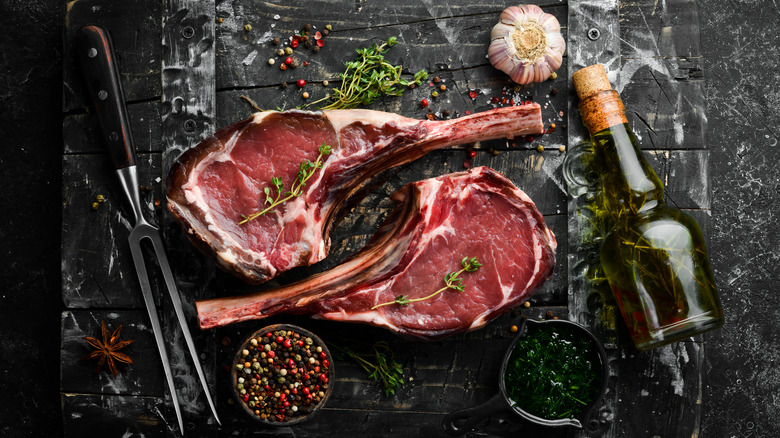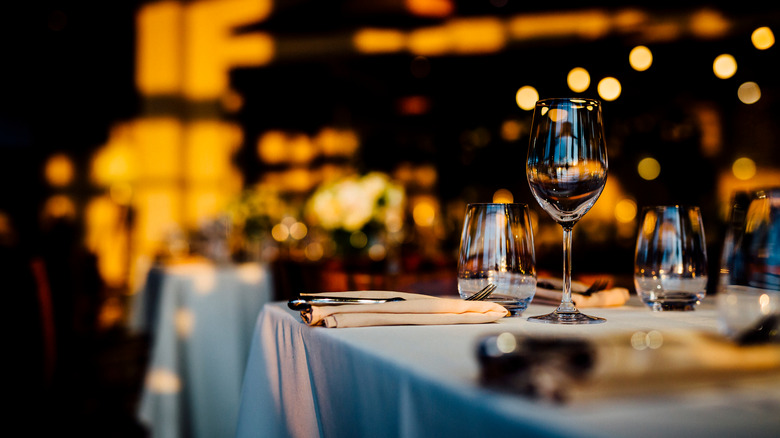How Delmonico's Paved The Way For American Restaurants
New York City's Delmonico's isn't the oldest eating establishment in the United States — that title is claimed by the White Horse Tavern in New Port, Rhode Island, which began service in 1673. However, as a tavern, White Horse can't claim to have championed fine dining in the United States.
In 1830, Italian-Swiss immigrants Giovanni and Pietro Del-Monico, who went by John and Peter Delmonico once in America, opened a French restaurant called Delmonico and Brother at 23 and 25 William Street (per Steak Perfection). By this point, the establishment had already become a known entity in the area, operating as a Parisian-style cafe for three years. The earlier business at 23 William Street served confectionaries, coffee, and wine, while the latter served French cuisine for lunch and dinner.
According to Restaurant-ing through history, Delmonico's was comparable to any restaurant in Paris by the 1840s, and in doing so, Delmonico's became a byword for class, expensive, and excellence. So, naturally, other Delmonico's began to appear in places as far-flung as San Diego, Detroit, and Buffalo. However, Delmonico's influence on haute cuisine in the United States extends beyond kitschy attempts to cash in on name recognition.
Delmonico's is a trend setter
Being the first fine dining restaurant in the United States, Delmonico's significantly shaped people's ideas about what restaurants could do. One trend set by Delmonico's is restaurant-branded dishes. Britannica explains that the restaurant was the first place in the United States to offer a menu, not simply serve whatever the kitchen made that day. The article continues by describing that the "Delmonico steak" is a thick-cut steak prepared with salt, pepper, a good broiling, and a topping of herb butter.
That's not all Delmonico's did. It was the scene for the first occasion of women publicly dining without being accompanied by men (per Atlas Obscura). Delmonico's also initiated the farm-to-table and local eating movements over a century before the idea became faddish. NBC details how the brothers built a farm in Brooklyn to control the restaurant's supply of vegetables — doing so also introduced endives, artichokes, and tomatoes to New York City cuisine.
In a list of other firsts, Steak Perfection credits Delmonico's with being the first establishment to call itself a "restaurant," being the first to use tablecloth, and introducing hamburger steak, baked Alaska, and eggs Benedict. With all these firsts, in a way, we are all still eating at Delmonico's.

